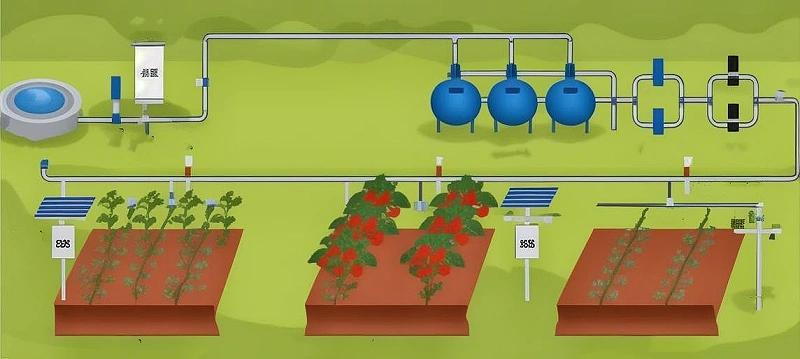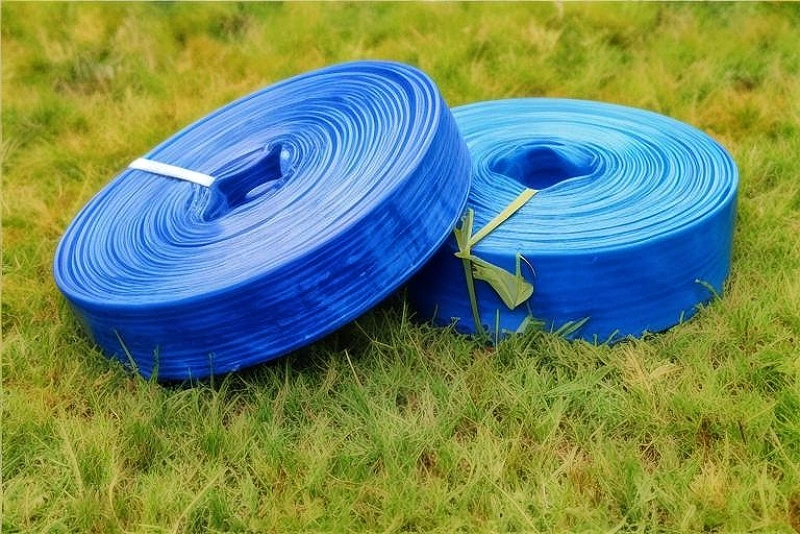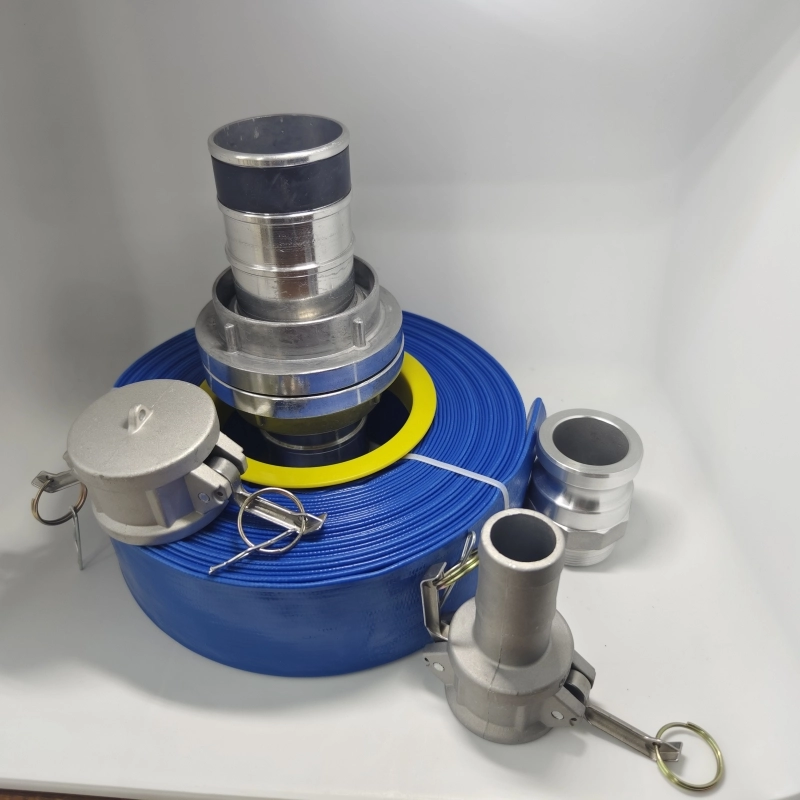What is irrigation system for garden?
Irrigation systems for gardens are designed to provide plants with the right amount of water to ensure healthy growth and reduce water waste.

What is irrigation system for garden?
Irrigation systems for gardens are designed to provide plants with the right amount of water to ensure healthy growth and reduce water waste. There are several types of irrigation systems suitable for gardens, each with its own advantages. Here’s an overview of the most common types of garden irrigation systems:

1. Drip Irrigation
Description: Drip irrigation delivers water directly to the base of plants through a network of tubes, pipes, and emitters. This system is highly efficient and minimizes water waste.
Components:
Drip lines (flexible tubing)
Emitters (small devices that release water slowly)
Filters (to prevent clogging)
Pressure regulators (to maintain even water pressure)
Advantages:
Reduces water waste by minimizing evaporation and runoff
Targets water directly to plant roots, promoting healthy growth
Can be easily automated
2. Soaker Hoses
Description: Soaker hoses are porous hoses that release water slowly along their length. They can be laid on the soil surface or buried under mulch.
Components:
Soaker hose (porous, flexible hose)
Timer (optional for automation)
Advantages:
Easy to install and use
Waters plants evenly and deeply
Reduces evaporation when placed under mulch
3. Sprinkler Systems
Description: Sprinkler systems distribute water over a wide area, mimicking natural rainfall. They are suitable for larger gardens and lawns.
Types:
Fixed sprinklers (stationary heads with specific spray patterns)
Rotary sprinklers (heads that rotate to cover a circular area)
Oscillating sprinklers (move back and forth to cover rectangular areas)
Advantages:
Covers large areas efficiently
Adjustable spray patterns and distances
Easy setup and movement
4. Micro-Irrigation Systems
Description: Micro-irrigation systems use small-scale devices like micro-sprayers, micro-bubblers, and drip emitters to water plants precisely.
Components:
Micro-sprayers (deliver a fine mist)
Micro-bubblers (emit water in a bubbling pattern)
Drip emitters (slow-release for targeted watering)
Advantages:
Ideal for specific plants or garden zones
Customizable to meet different watering needs
Efficient water use
5. Manual Watering
Description: Manual watering involves using hoses, watering cans, or buckets to water plants directly. This method allows for precise control over the amount of water each plant receives.
Components:
Hose with spray nozzle (provides adjustable water flow)
Watering can (for small gardens or potted plants)
Advantages:
Flexible and easy to control
No need for complex setup or equipment
6. Automated Irrigation Systems
Description: Automated systems use timers and sensors to control watering schedules. These systems can be integrated with drip, soaker, or sprinkler systems for convenience and efficiency.
Components:
Timers (set watering schedules)
Soil moisture sensors (trigger watering based on soil moisture levels)
Weather sensors (adjust watering schedules based on weather conditions)
Advantages:
Saves time and effort
Ensures consistent and optimal watering
Reduces water waste
7. Hydroponic and Aeroponic Systems
Description: These systems are used for soilless cultivation and deliver water and nutrients directly to plant roots.
Hydroponics:
Plants are grown in a nutrient-rich water solution.
Uses a system of pipes, pumps, and nutrient reservoirs.
Aeroponics:
Roots are suspended in the air and misted with a nutrient solution.
Utilizes a misting system to deliver nutrients.
Advantages:
Can be highly efficient in water and nutrient use
Suitable for controlled environment agriculture
Choosing the right irrigation system for your garden depends on factors like the size of the garden, types of plants, and your watering preferences. Drip irrigation and soaker hoses are excellent for efficient and targeted watering, while sprinkler systems are better for larger areas. Automated systems can enhance any irrigation method by providing convenience and precise control over watering schedules.
The Agricultural Irrigation Flexible Pump PVC Yellow/Blue/Red Lay Flat Hose is a highly efficient and practical irrigation solution. Constructed from durable PVC material, it offers excellent flexibility and resistance to wear and tear, ensuring long-lasting performance in various agricultural settings.This hose plays an important role in garden irrigation and is an important part of the garden irrigation system.
Design and construction of irrigation system for garden
Designing and constructing an irrigation system for a garden involves careful planning and execution to ensure efficient water distribution and healthy plant growth. Here's a step-by-step guide:

Step 1: Planning and Design
Assess Garden Needs:
Determine the types of plants in your garden and their specific water requirements.
Measure the size of your garden to understand the area that needs to be irrigated.
Choose an Irrigation Method:
Drip Irrigation: Best for targeted watering, minimizes water waste.
Soaker Hoses: Good for even and deep watering, easy to install.
Sprinkler Systems: Suitable for larger gardens or lawns, covers wide areas.
Design the Layout:
Sketch a layout of your garden, marking the locations of plants, garden beds, and lawn areas.
Plan the placement of main supply lines, lateral lines, and emitters or sprinkler heads.
Select Components:
Main Supply Lines: Typically PVC or polyethylene pipes.
Emitters/Sprinklers: Choose based on your selected irrigation method.
Valves and Timers: For controlling water flow and automation.
Filters and Pressure Regulators: To prevent clogging and maintain consistent water pressure.
Step 2: Materials and Equipment
Pipes and Tubing:
Main supply lines (PVC, polyethylene)
Lateral lines (flexible tubing for drip systems)
Irrigation Components:
Drip emitters, soaker hoses, or sprinkler heads
Valves (manual or automated)
Timers and controllers
Filters and pressure regulators
Tools:
Shovel or trenching tool
Pipe cutter
Measuring tape
Hose clamps and connectors
Step 3: Installation
Prepare the Site:
Clear the garden area of any debris.
Measure and mark the placement of main and lateral lines.
Install the Main Supply Line:
Dig trenches for the main supply line, typically 6-12 inches deep.
Lay the main supply line in the trench and connect sections using appropriate fittings.
Secure the connections with hose clamps.
Install Valves and Controllers:
Place valves at key points along the main line to control water flow to different zones.
Install timers and controllers for automated watering schedules.
Lay Lateral Lines:
For drip irrigation, run flexible tubing along garden beds, securing them with stakes.
For soaker hoses, lay them directly on the soil or under mulch.
For sprinklers, place sprinkler heads at planned locations and connect them to the lateral lines.
Attach Emitters and Sprinklers:
Install drip emitters at the base of each plant, ensuring they are positioned near the root zone.
Adjust and secure sprinkler heads to ensure even coverage.
Install Filters and Pressure Regulators:
Install filters at the water source to prevent debris from clogging the system.
Use pressure regulators to maintain consistent water pressure throughout the system.
Step 4: Testing and Adjustments
Initial Test:
Turn on the water supply and check the entire system for leaks and proper water distribution.
Observe the emitters or sprinklers to ensure they are providing uniform coverage.
Make Adjustments:
Fix any leaks in the connections or pipes.
Adjust the position of emitters and sprinklers if necessary to ensure even watering.
Step 5: Maintenance
Regular Inspections:
Periodically inspect the system for leaks, blockages, and wear and tear.
Clean or replace filters as needed.
Seasonal Adjustments:
Adjust watering schedules based on seasonal changes and plant growth stages.
Drain the system before winter to prevent damage from freezing temperatures.
Example Design and Installation
Scenario: A 500-square-foot vegetable garden with a mix of tomatoes, peppers, and lettuce.
Design:
Drip Irrigation System: Ideal for vegetable gardens.
Main supply line runs along one side of the garden.
Lateral drip lines run perpendicular to the main line, spaced 2 feet apart.
Materials:
50 feet of 1/2-inch main supply line (PVC or polyethylene)
200 feet of 1/4-inch drip tubing
50 drip emitters (1 per plant)
2 valves (one for each section of the garden)
Timer and controller
Filter and pressure regulator
Installation:
Main Supply Line: Trench and lay the main supply line along the garden edge.
Valves and Timer: Install a valve and timer at the water source.
Lateral Lines: Lay 1/4-inch drip tubing along each row of plants, securing with stakes.
Emitters: Attach emitters near the base of each plant.
Testing: Turn on the system, check for leaks, and ensure emitters are working correctly.
By following these steps, you can design and construct an efficient irrigation system tailored to your garden's specific needs, ensuring healthy plant growth and optimal water use.

How to choose an irrigation system for garden?
Choosing the right irrigation system for your garden depends on several factors, including the types of plants, garden size, water availability, and your budget. Here’s a guide on how to select the appropriate irrigation system for various garden scenarios:
Factors to Consider
Types of Plants:
Different plants have different water requirements.
Consider grouping plants with similar water needs together.
Garden Size:
Small gardens may benefit from simple systems like soaker hoses or manual watering.
Larger gardens might require more complex systems like drip or sprinkler irrigation.
Water Availability:
Consider the water source and its reliability.
Check for any water restrictions in your area.
Budget:
More advanced systems like drip irrigation can be more costly initially but save water and reduce costs over time.
Manual systems are cheaper but require more labor.
Soil Type:
Soil permeability affects water distribution.
Sandy soils drain quickly, while clay soils retain water longer.
Specific Application Scenarios
Scenario 1: Small Vegetable Garden
Garden Size: 200 square feet
Plants: Tomatoes, lettuce, carrots
Recommended System: Drip Irrigation
Reason:
Drip irrigation provides precise watering directly to the root zone, reducing water waste.
It prevents foliage from getting wet, which can reduce the risk of fungal diseases.
Components:
1/2-inch main supply line
1/4-inch drip tubing
Drip emitters
Timer and pressure regulator
Installation:
Lay the main supply line along one edge of the garden.
Run drip tubing along each row of vegetables.
Install emitters near the base of each plant.
Set up a timer to automate watering schedules.
Scenario 2: Large Flower Garden
Garden Size: 1,000 square feet
Plants: Mixed flowers with varying water needs
Recommended System: Sprinkler System
Reason:
Sprinklers can cover large areas efficiently.
They are adjustable to provide different spray patterns and distances.
Components:
Main supply line (PVC or polyethylene)
Sprinkler heads (rotary or fixed)
Valves and timer
Installation:
Lay the main supply line through the garden.
Place sprinkler heads at strategic locations to ensure even coverage.
Connect the system to a timer for automated watering.
Scenario 3: Raised Bed Garden
Garden Size: 300 square feet with multiple raised beds
Plants: Herbs, vegetables, and flowers
Recommended System: Soaker Hoses
Reason:
Soaker hoses provide even and deep watering, ideal for raised beds.
They are easy to install and can be placed under mulch to reduce evaporation.
Components:
Soaker hoses
Timer (optional)
Installation:
Lay the soaker hoses in each raised bed, ensuring they are evenly spaced.
Connect the hoses to a main supply line or directly to a garden hose.
Use a timer to automate watering if desired.
Scenario 4: Lawn Area
Garden Size: 2,000 square feet
Plants: Grass
Recommended System: In-ground Sprinkler System
Reason:
In-ground sprinklers provide even coverage and can be hidden below the lawn surface.
They are ideal for large, uniform areas like lawns.
Components:
In-ground sprinkler heads
PVC pipes
Valves and controller
Installation:
Lay out the PVC pipes underground according to the planned layout.
Install sprinkler heads at regular intervals to ensure full coverage.
Connect the system to a timer and controller for automation.
Conclusion
Selecting the right irrigation system involves evaluating your garden's specific needs and conditions. Drip irrigation is excellent for precise, water-efficient watering of individual plants or rows. Sprinkler systems are suitable for covering larger areas or mixed plantings. Soaker hoses work well for raised beds and smaller gardens. Automated systems can save time and ensure consistent watering schedules. By considering the type of plants, garden size, water availability, budget, and soil type, you can choose the most effective irrigation system for your garden.
We are a well-known PVC hose supplier in China, we provide high-quality PVC hoses in various specifications. This hose plays an important role in the garden irrigation system.



